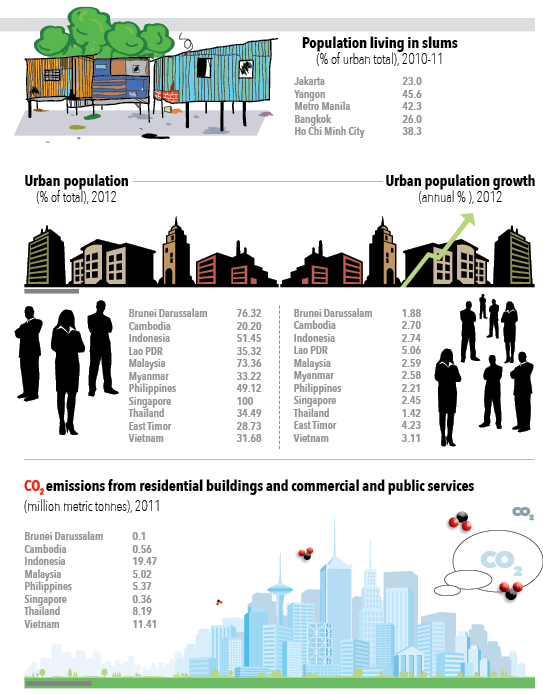As Southeast Asia’s urban populations boom, city authorities are faced with daunting to-do lists
By Joana Maria Tacken and Jemma Galvin Illustration by Luke Lelonkievitz

Cities in Southeast Asia are growing twice as fast as the rest of the world. By the year 2030, it is estimated that a whopping 70% of the region’s population will live in its urban centres, according to the World Bank.
This seismic shift in human habits is being driven by the ever-growing significance of cities in economic development: the urban space is the focal point of progress and innovation, and where those formerly living in rural areas migrate to in search of employment and a better life.
Yet not all who flock to Manila or Bangkok find what they’re looking for. Urban poverty remains a problem and may increase as employment in agriculture declines. In the past 50 years, the global population of those living in slums has risen from 35 million to more than one billion, and is not slowing down.
In order to tackle problems such as urban poverty, the proper infrastructure decisions must be made now. One key area is that of sustainable and energy-efficient infrastructure solutions. Improving energy efficiency isn’t just good for the environment; it’s good for economic growth too, according to the World Bank, and a focused approach to it will result in increased investment, job creation and productivity.
If the correct steps are taken, urban centres can become the protectors, rather than the destroyers, of the environment and of the people forging out a life in them.
Keep reading:
“Metropolitan life” – From compact homes to urban agriculture, making the most of space in Southeast Asia’s cities is paramount for the region’s designers and architects

